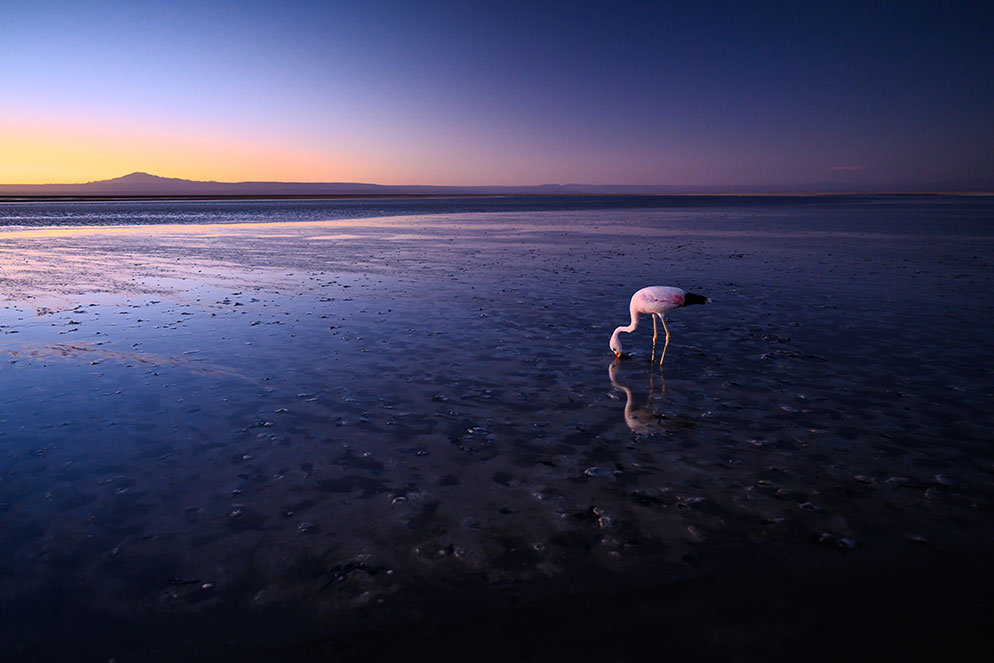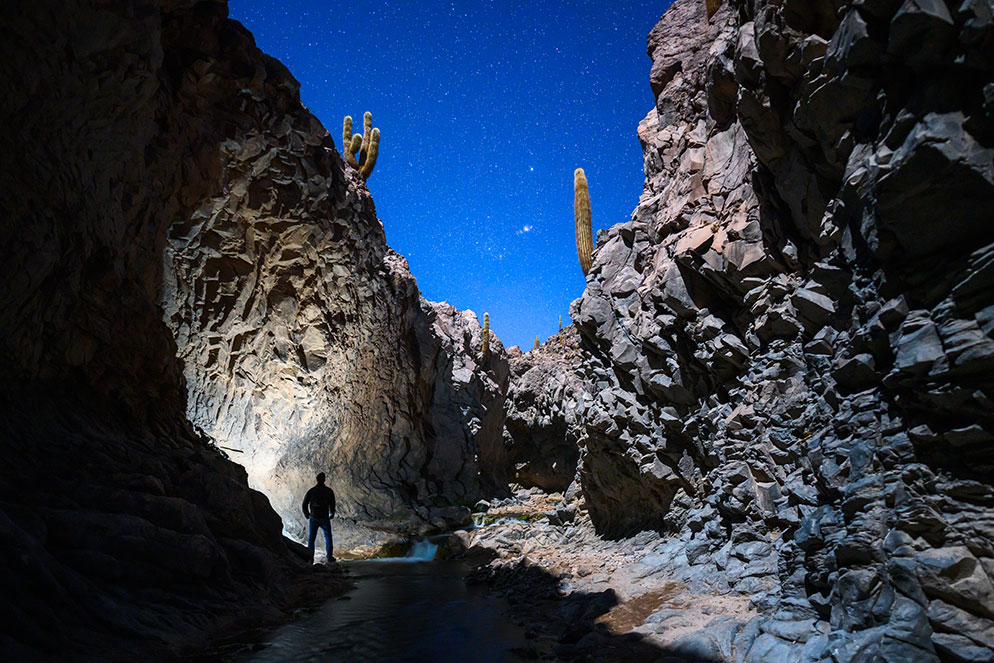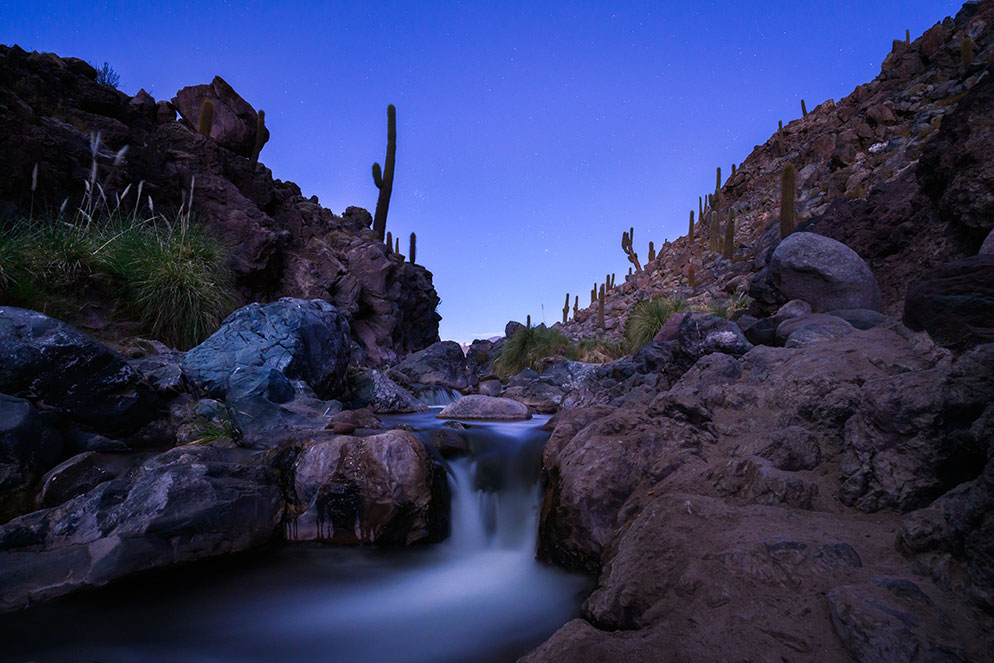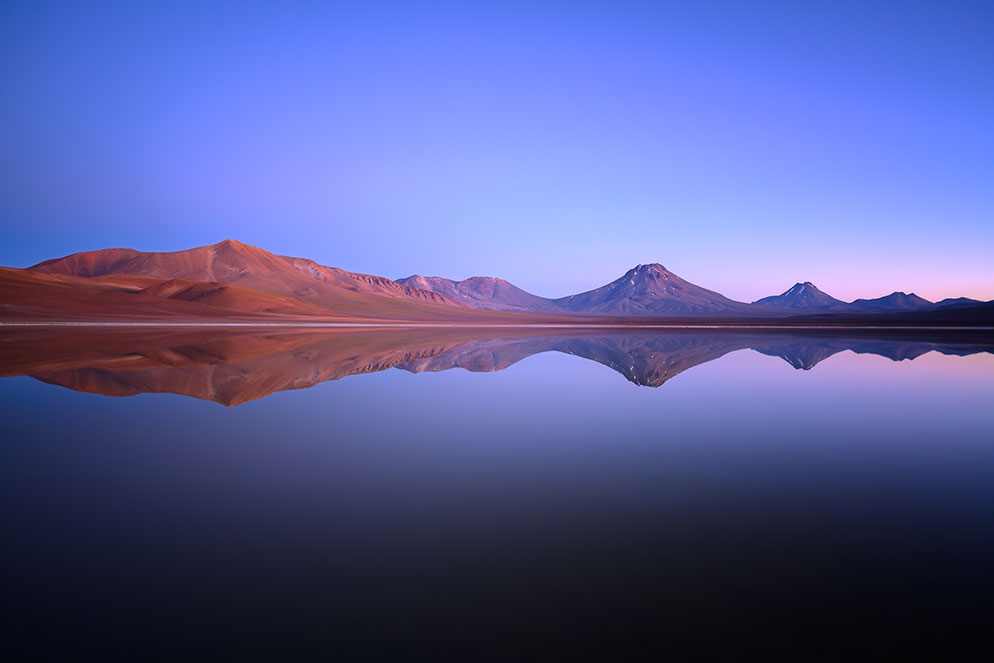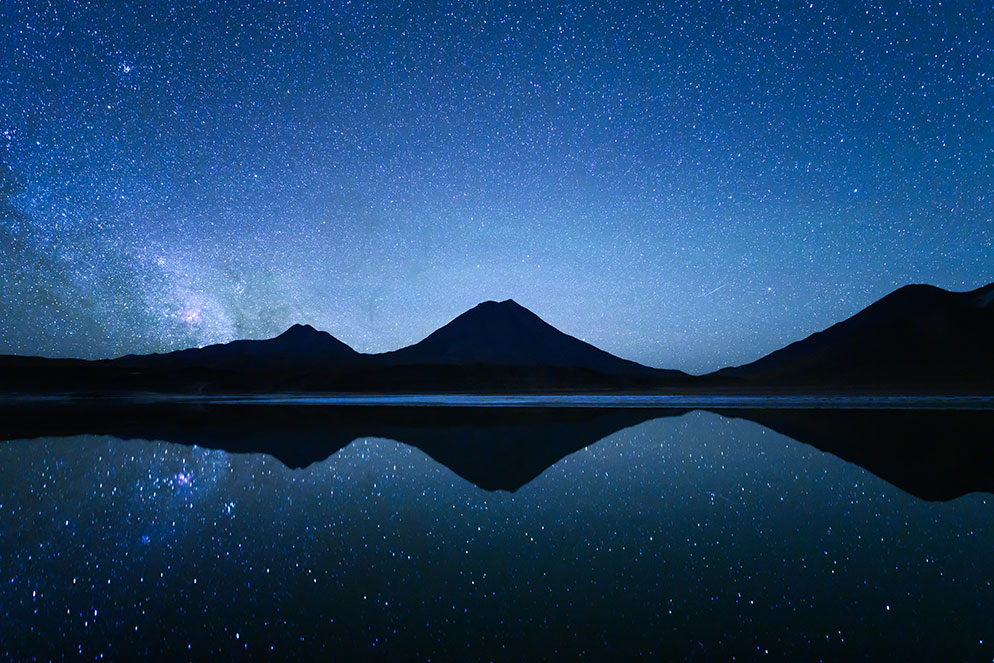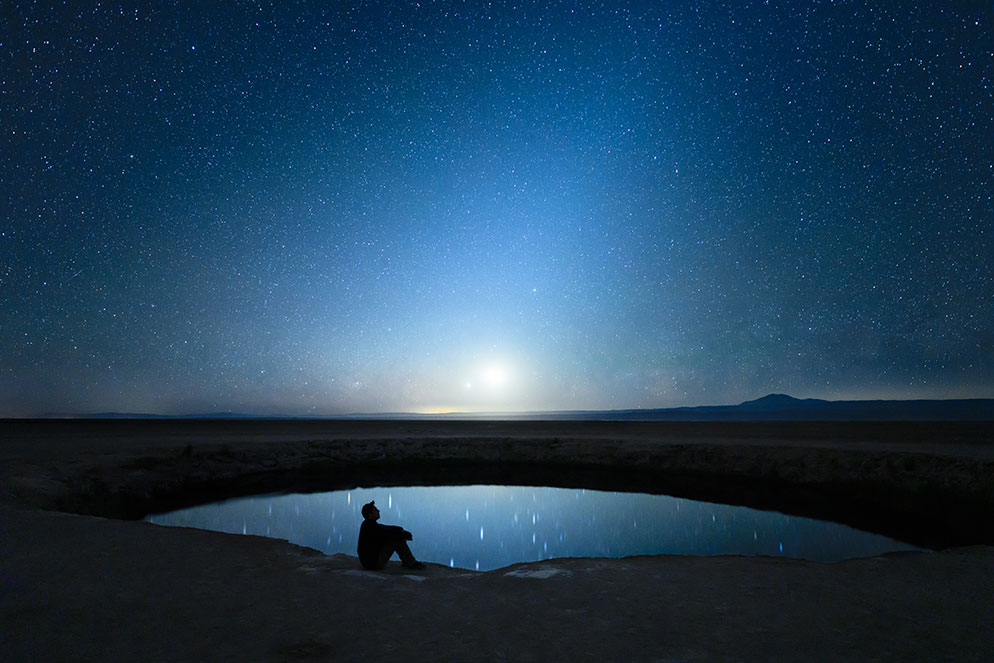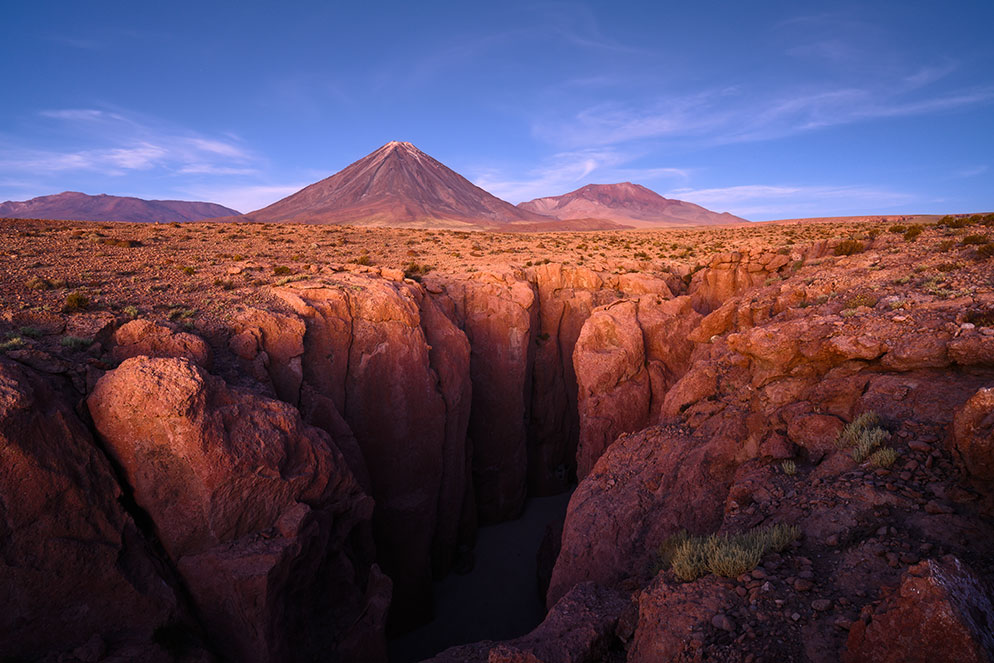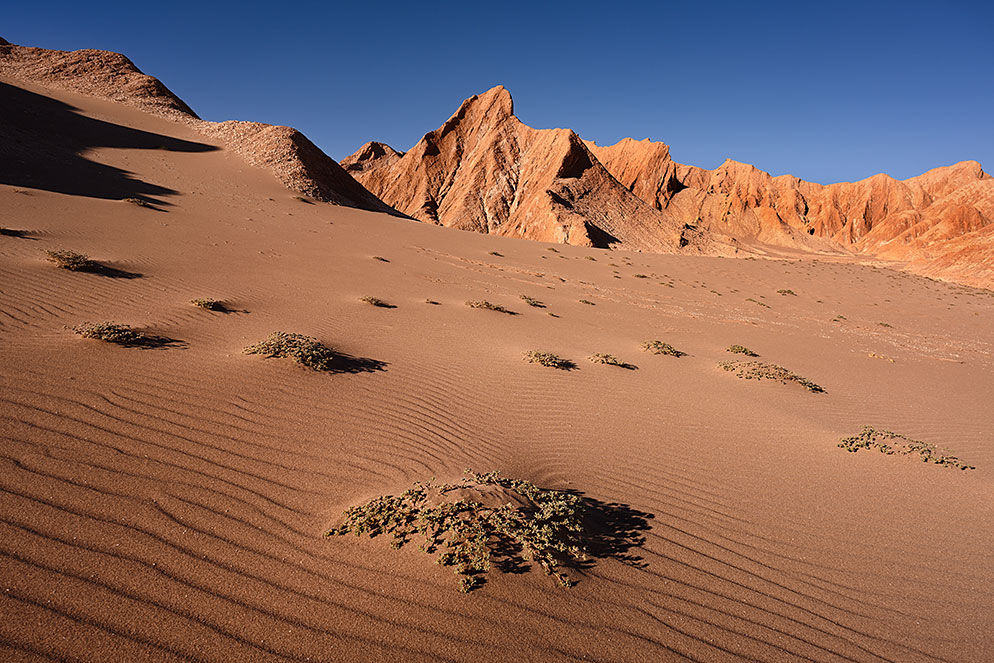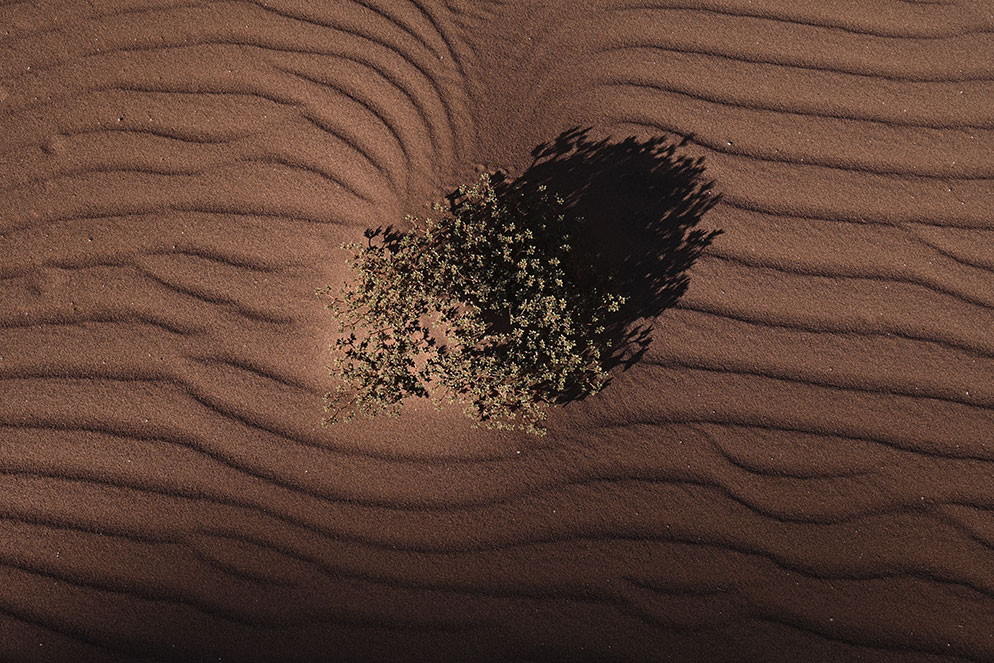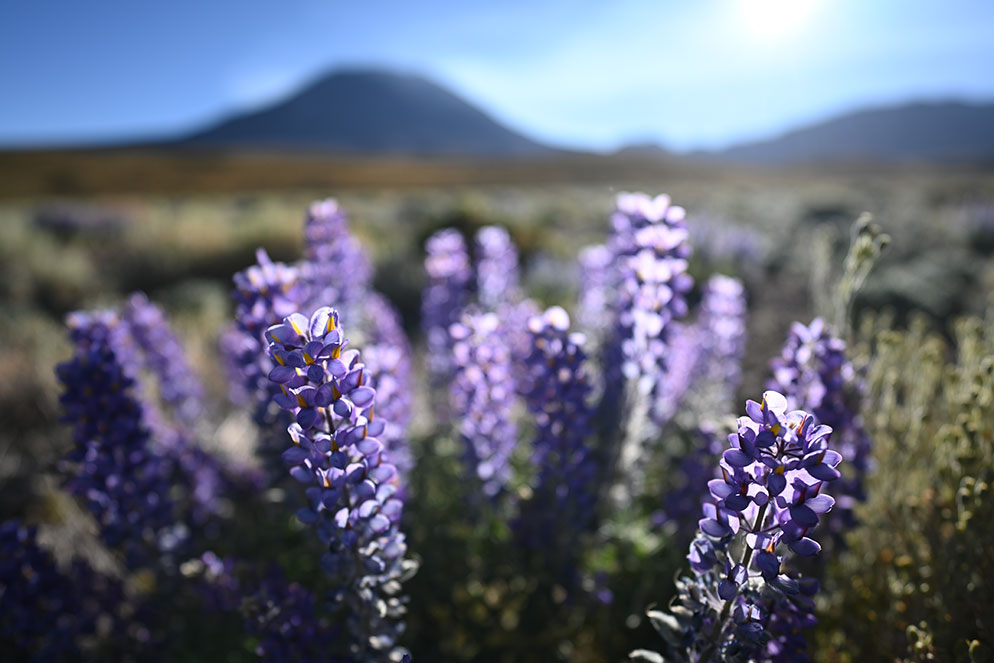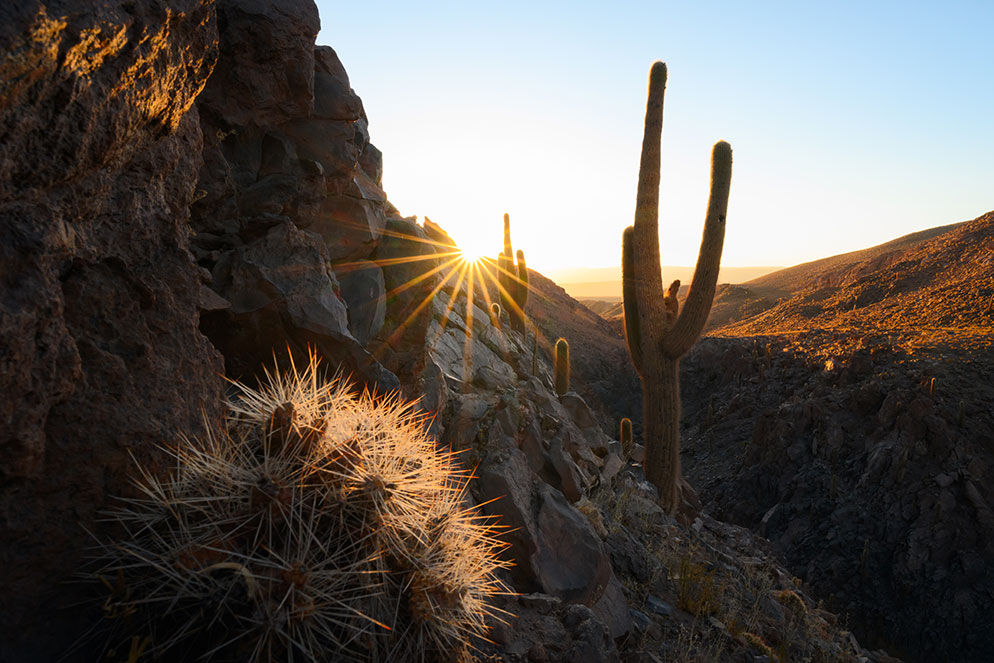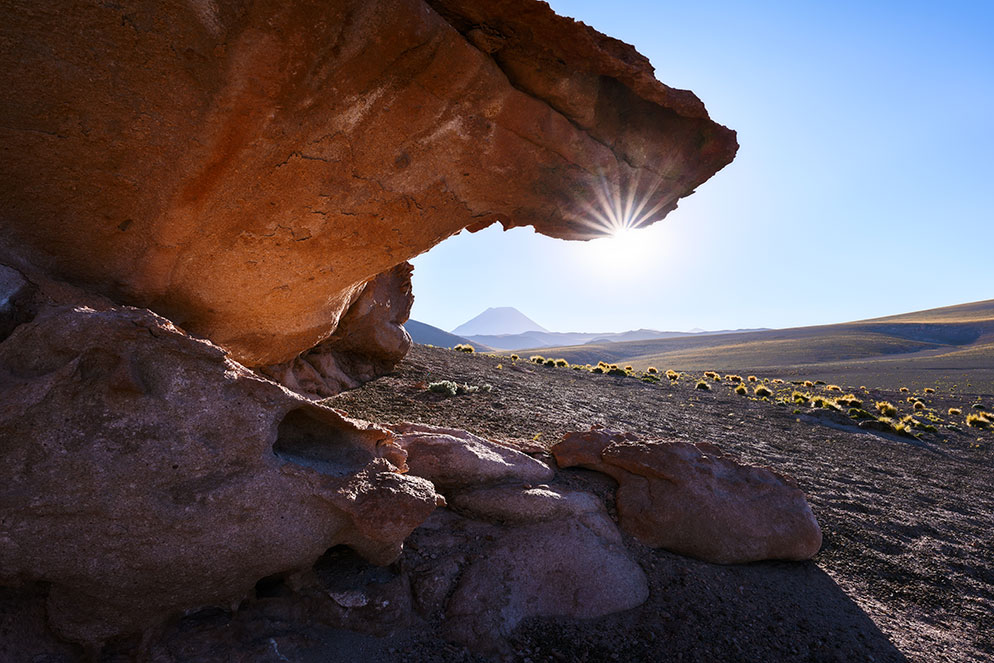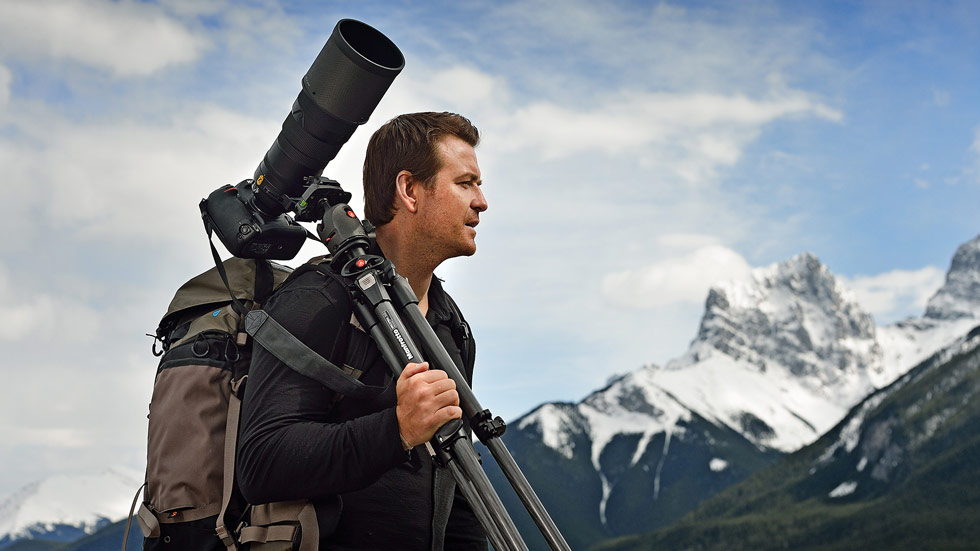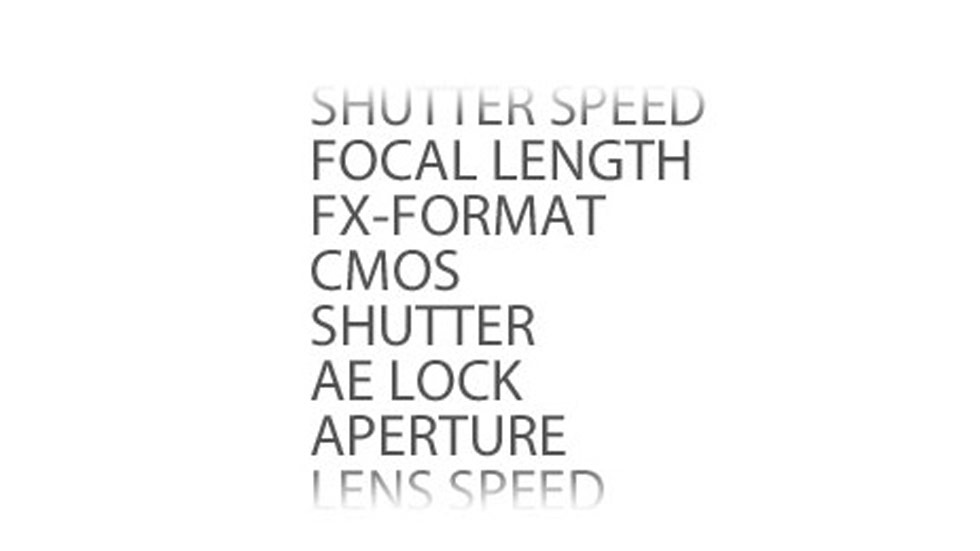How the 20mm f/1.8 Prime Expands the Z System...and Your Photography
Cactus in the Guatin Valley (Valle de los Cactus) in the Atacama Desert can grow over 20 feet tall, and Taylor often likes to put himself in a scene to add the human factor and also, in this case, a sense of scale. "The moon was high in the sky, and it cast light on the right side," he says. "I held a flashlight and bounced its light off the rocks in front of me to form the silhouette." Z 7, NIKKOR Z 20mm f/1.8 S, 10 seconds, f/1.8, ISO 2500, manual exposure, Matrix metering.
The Atacama Desert is a desert plateau covering about 600 miles of the northern coast of Chile. It's one of the driest places in the world, but at its higher elevations there are lakes, ponds and salt flats. It's a varied landscape that offers both photo opportunities and challenges, and it's where landscape photographer Taylor Gray took the photos you see here with the NIKKOR Z 20mm f/1.8 S, Nikon's widest prime lens for Z system cameras to date.
Seeing is Believing
You can tell from Taylor's photographs that he's not a photographer who heads back to the hotel, the camper or the campsite when the sun goes down. When we talked with him, he got to the dark side right away by calling our attention to the starry night sky above the wide open spaces in an image that shows the clarity and detail a wide-angle lens can capture—especially a fast, wide-angle prime designed, as all Z lenses are, for nothing short of astounding edge-to-edge sharpness.
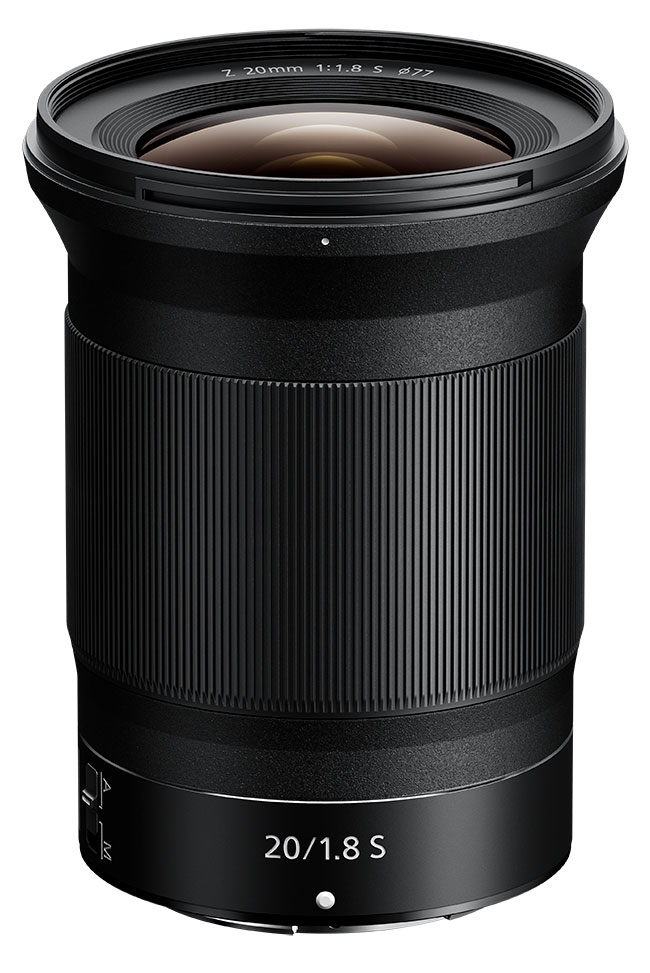
"This was earlier in the day in the Guatin Valley, and you get a better sense of the river in this image. The sun had set and a long exposure caught the ambient glow on the horizon." Z 7, NIKKOR Z 20mm f/1.8 S, 15 seconds, f/5.6, ISO 1600, manual exposure, Matrix metering.
What draws him to low-light and night-light scenes? Drama, contrasts and deep shadows are a start, but there's more to it.
"Those situations are opportunities to share images of what can't be seen with the naked eye," Taylor says. "I'm doing long exposures, 15 or 20 seconds, and those exposures draw in all this information, all this light into the camera for a single image that you couldn't see with your eyes. The idea is seeing things that are happening over time, things you wouldn't be able to see any other way."
And the wider the view and the sharper the lens, the more you'll see what you can't normally see. "The 20mm Z lens was the one I was most looking forward to," he adds. "I expected, and I got, an extra level of detail and clarity with the 20mm prime."
The area is called Los Ojos (The Eyes) and Taylor set the camera's self-timer for 20 seconds so he could get in the scene as the bright crescent moon was setting above the horizon. The movement of the water streaked the reflected starlight. Z 7, NIKKOR Z 20mm f/1.8 S, 15 seconds, f/1.8, ISO 3200, manual exposure, Matrix metering.
The Edge Test
Taylor's on-location checking of the edge-to-edge sharpness of the lens involved taking...well, simply a close look. "A good way to be sure is to shoot wide open at f/1.8, then zoom in on the LCD to the corners," Taylor says. "You want to find a scene that has strong texture in the foreground that the lens can do justice to. That's the starting point for checking the sharpness of detail at the edge, too. What I saw in the tests was a minimal, hardly noticeable difference in sharpness between the corners and the center of the image. And I'd do an edge blow-up from time to time to check the light, the contrast and the details, and the edges were consistently sharp."
The Licancabur volcano rises almost 20,000 feet on the Bolivia-Chile border. "The sun had just set, and the remaining ambient light cast an orange glow across the entire landscape. I'd found this deep canyon scouting locations online and ended up with this composition with the canyon and the volcano." Z 7, NIKKOR Z 20mm f/1.8 S, 8 seconds, f/8, ISO 100, manual exposure, Matrix metering.
With this lens there's a level of contrast and clarity that I hadn't seen before.
"There was a lot going on in the Valle de Marte—the Mars Valley—in the Atacama: desert smoothness and ripples, shrubs, mountains and sky tones. This is one of the more popular areas for tourists." Z 7, NIKKOR Z 20mm f/1.8 S, 1/200 second, f/11, ISO 100, manual exposure, Matrix metering.
"The camera, on my tripod, was set for interval shooting and tilted to shoot down," Taylor says. "Then I held the tripod above my head, about 15 feet in the air. I could kind of see from the tilted LCD screen what I was looking at in the general area, and I just walked around getting high-angle perspectives. This frame worked really well with the horizontal ripples and kind of boat-wake pattern at the top." Z 7, NIKKOR Z 20mm f/1.8 S, 1/640 second, f/8, ISO 200, manual exposure, Matrix metering.
Taylor also mentioned the 20mm's great point light quality—meaning no halo, no flare around bright points of light. It's an important plus for him, as he occasionally likes to feature a sunburst effect. "Sometimes I'd get a lens flare with that," he says, "but with this lens there's a level of contrast and clarity that I hadn't seen before. Nothing got in the way of the effect, and that was impressive."
The Moving Image
Lately Taylor's work is about evenly divided between stills and video, and the 20mm lens is going to be an important part of his video production.
"I think when you shoot video, prime lenses are the way to go," he says. "This is going to be a great wide-angle prime for my videos."
All in all, it's a sure bet that the 20mm f/1.8's sharpness and light-gathering speed is going to make it a constant companion for Taylor's travels in search of varied and dramatic day and night landscapes.
Taylor shot this at a high-elevation location about 30 minutes from Lejia Lake. "This is somewhat of a test image," he says. "I wanted to see the capabilities of the lens in a backlit situation, and how much, if any, lens flare or ghosting there'd be and what the contrast would be like. No lens flare, minimal ghosting and spectacular contrast. I love the vibrant glow of the afternoon sun on the underside of the rock." Z 7, NIKKOR Z 20mm f/1.8 S, 1/640 second, f/8, ISO 100, manual exposure, Matrix metering.

